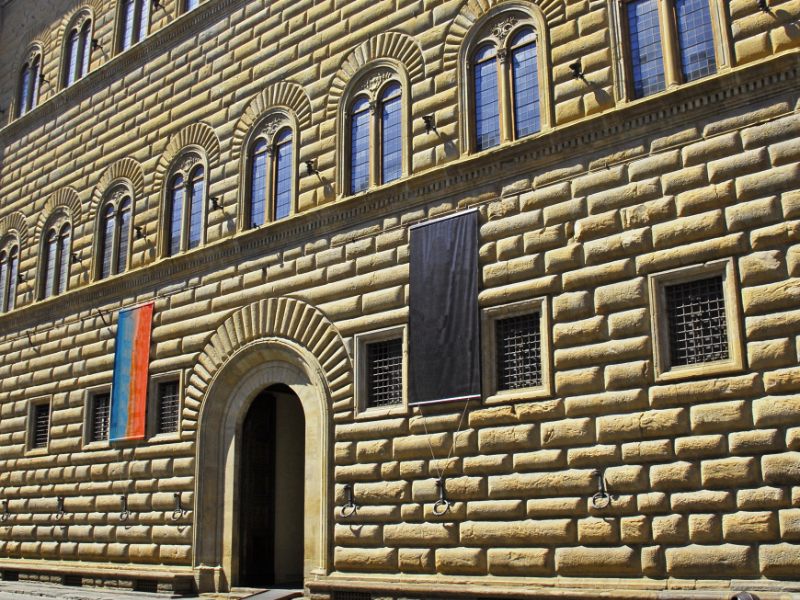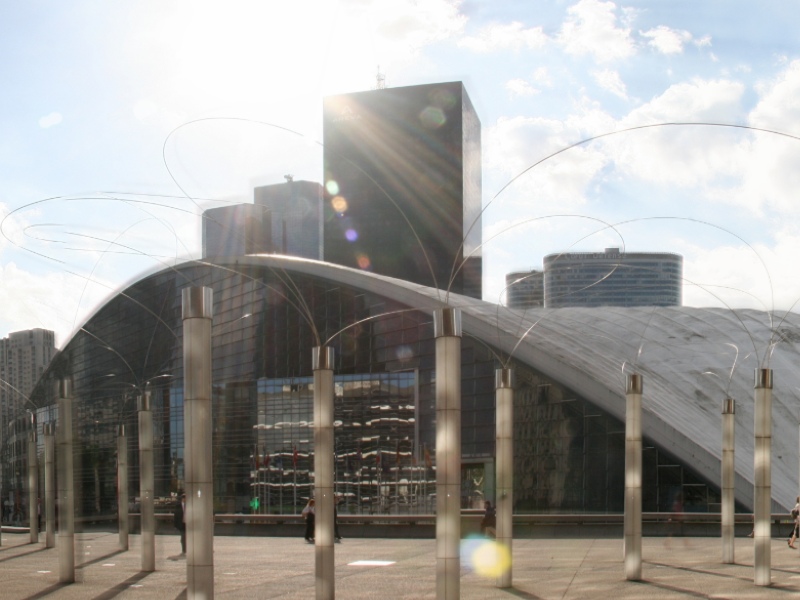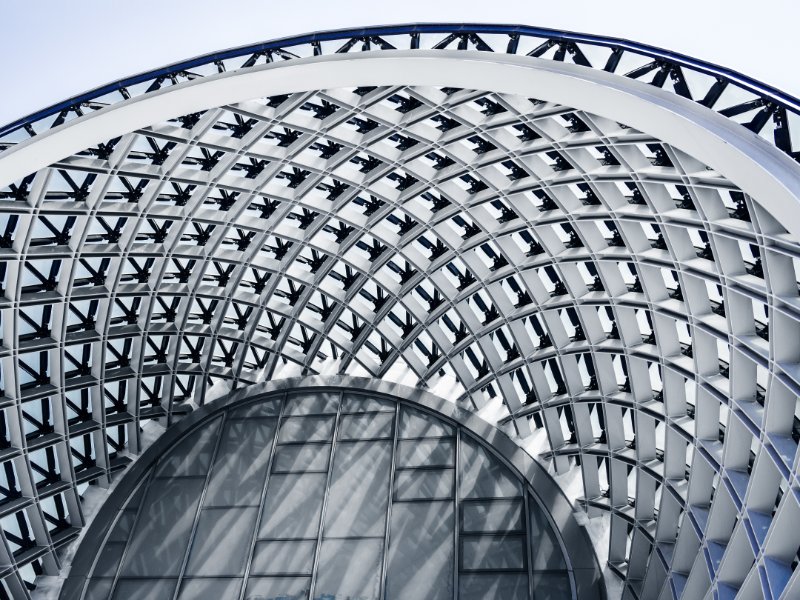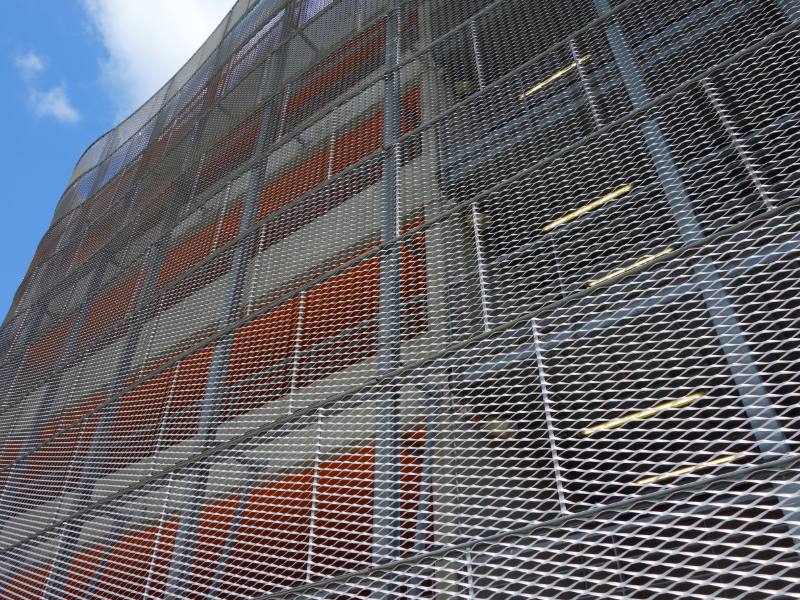The role of cladding in architecture has played a fundamental role since ancient times. The ancient Greeks built their temples in pure marble. The Parthenon, the pinnacle of the important series of temples left to us, is made entirely of Pentelic marble, or extracted from the quarries of Mount Pentelic not far from Athens.
We are in the fifth century BC, and for such important achievements, the structure and shape were perfectly matched.
Substance is form and form is substance.
However, it is believed that already at this time the temples had part of their external facades and internal surfaces decorated with colored stuccos, to give relief and recognition to the triglyphs, the metopes and the entire tympanum.
Over time, the decorations gradually became more textural and physical, until they became real coverings. The Pantheon in Rome was covered in slabs and other bronze elements.
The same cannot be appreciated today because they were removed and merged for the construction of other works and artifacts, such as an entire cannon artillery wanted by Urban VIII.
THE STORY OF EXTERIOR FACADE CLADDINGS CONTINUES…
Finally we come to the 16th century, and here we can appreciate one of the most iconic architectures of the time: Palazzo Strozzi in Florence. The building in question communicates a sensation of massive and imposing physical presence.
The ashlar so strongly in relief transfers all the typical sensations of a certain way of the time, representative of the end of the first Renaissance.
Now, all the facades are made of ad hoc worked and laid facing stone.
This final result was achieved with the collaboration of architects who laid out the design of the facades, expert quarrymen who extracted and split the stone into blocks, skilled stonemasons who worked the drafts to the right measure and the right way and finally site masters who laid the stone elements to form the wonder that we appreciate today.
Today, cladding is an often essential way of doing architecture.
In fact, current construction technologies, such as steel and reinforced concrete, allow us to erect products quickly and at reduced costs.
To the bearing structure of the building, we can integrate a coating designed and created specifically for the work, playing with surfaces, volumes, textures and materials. The project is no longer a separate cladded structure but an indissoluble marriage that returns a unique result.

ALUMINIUM: BECAUSE IT IS AN EXCELLENT SOLUTION FOR CREATING FACADE CLADDINGS
In light of what has been said, we cannot fail to mention aluminium. It is an extremely performing material from multiple points of view.
Aluminium is a chemical element of the periodic table. This means that in nature it can be found as an isolated material and does not make up molecules by binding its atoms together with the atoms of other elements.
It is extracted from bauxite which is present to a large extent in the earth’s crust, more specifically with a percentage of about 8 percent. It can be subjected to a large number of processes such as casting, forging, extrusion, molding and more.
For what reasons is it a highly performing material in the field of cladding? Let’s look at some concrete points on this subject together.
MECHANICAL PROPERTIES
Aluminium is a structurally performing material. In order to better understand this aspect we introduce the elastic modulus also called Young’s modulus. It is a parameter that relates the tension s acting on the material to its deformation and, for the same tensions, a material with a greater elastic modulus is less deformed. Conversely, a material with a lower elastic modulus deforms more.
Therefore, the elastic modulus indicates the material’s ability to withstand external stresses assuming minimal deformations compatible with use. So, for aluminium it is E = 690000 daN / cmq. This is about 1/3 of steel, the structural metal par excellence and therefore we can say that it is a material well able to withstand the actions required for a facade cladding.
As for example, the wind and the snow load in the case of surfaces close to horizontality.
WEIGHT
Despite being very resistant to loads, aluminium is nevertheless quite light: 2700 daN / mc. Steel is much heavier: 7850 daN / mc. This factor is decisive for a satisfactory result in technological terms.
In fact, a light cladding fixed with dry systems is more easily assembled and disassembled, and therefore facilitates installation but also any maintenance works.
DURABILITY AND RESISTANCE TO EXTERNAL AGENTS
Aluminium performs very well in contact with the external environment. In fact, it impeccably manages heat, cold, humidity and sunlight.
It does not suffer from the aggressiveness of ultraviolet rays and also creates a very thin superficial patina of oxide that protects the underlying thickness of the metal section.
All this allows the production of stable and aesthetically unchanged coating systems over time.
ALUMINIUM SOLUTIONS FOR CLADDING: SOME PROPOSALS AND CONSIDERATIONS
We will now evaluate some project possibilities to be used for the design of aluminium facades. The options available are varied and suitable to guarantee functionality and aesthetic appeal to the final coating.
Aluminium powder coating can be worked in the most varied ways to obtain exciting results. The aluminium is coated with very high quality polyester powders applied continuously, therefore without any interruption that compromises the final visual appearance of the surfaces. It can be folded, deformed and shaped according to specific design needs. All the appropriate colours can be requested according to numerous classifications: RAL, NCS, Pantone and others.
One way to enjoy the view of this material is to take a walk through La Défense, in Paris, and observe the shell of the CNIT, or the “Center des nouvelles industries et technologies”.
Liquid-cycle pre-coated aluminium allows a high quality standard in terms of respect for the environment, especially as regards issues related to post-coating.
For example, VOC, or volatile organic compounds, are reduced to almost zero. The continuous treatment from the initial metal strip to the final product ensures greater quality than post-coated aluminium.
Composite aluminium panels consist of two aluminium sheets positioned on the faces of a polyethylene panel.
Thanks to this, the element acquires a greater amount of inertia and becomes better able to better support stresses.
Fire performance can be improved with the Fire Retardant version and its value for money ratio is very competitive. The Turin headquarters of Faema is an excellent example of aluminium architecture.

CNIT in Paris
FROM THE INITIAL IDEA TO INSTALLATION: BECAUSE THE KNOW-HOW OF EXPERIENCED AND COMPETENT PERSONNEL IS FUNDAMENTAL
We close this encounter on aluminium with a circular narrative. So let’s go back to the beginning. Like any operation within the architectural process, all the necessary know-how is required to achieve the desired result in a linear and satisfactory way.
As in the past, the actors of the great cathedrals were architects, quarrymen, stonemasons and master masons who with their wisdom left us the wonders that we still appreciate today. Who are the architects, quarrymen, stonemasons and masters of our contemporary today?
Aluminium is an innovative, unlimited, flexible, creative and resistant material. But, like all modern solutions, it requires some unusual and specific skills and processes.
For this reason, it is advisable for you to be accompanied on the way by partners able to better orient the process.
If you are an architect and you are forming the idea of a facade design in your mind, an imaginative pattern, a winning texture to treat surfaces, you can be helped to develop a coherent and functional technological project. To better study the mechanical support systems according to your needs, integrating them into the building and obtaining the final visual effect that you have fixed in your sketches.
Cantori Architectural Skins is a consolidated reality that will be able to support you concretely in all the complex steps that require experience and mastery of the material.
It will support you by listening first to your needs and ideas.
It will be able to recommend the right material for your imagination. It will then develop the technological project with you to achieve tailor-made solutions, alongside specialised technicians. Everything will happen with the possibility of using cutting-edge technologies, such as laser instruments and 3D scanners.
The final object will be the fruit of precise production, to the millimetre, and will be brought into operation ready to be laid. At each stage of this process, you can count on the continuous availability of trained and responsible personnel, truly a level partner.




